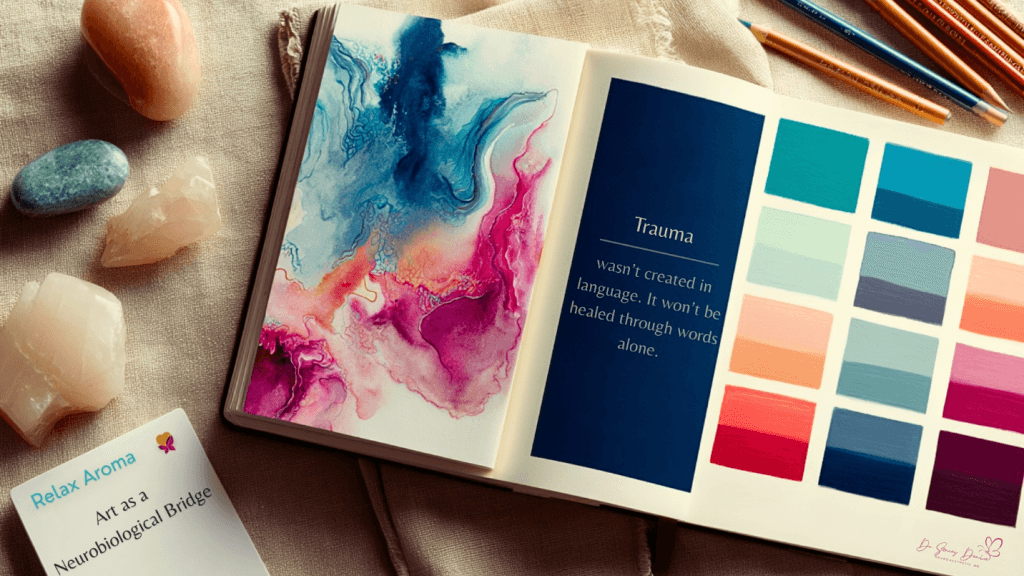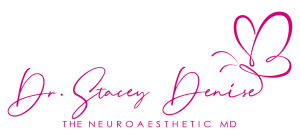What do we see when we look in the mirror of our lives? For many women navigating neurodivergence, trauma, and identity marginalization, the answer is often fractured. Not because they are broken, but because the visual, symbolic, and emotional languages that once tethered them to a coherent sense of self have been disrupted.
As I guide my patients and clients through lifestyle medicine rooted in neuroaesthetic science, one truth keeps emerging: we cannot regulate what we have not symbolized. We cannot repair what we are not allowed to see.
This is why visual art, symbolism, and neuroaesthetic expression are not luxuries, they are lifelines.
The Research: Art as a Neurobiological Bridge
Let’s start with what the brain is trying to tell us. Three recent studies give us compelling evidence that art, symbolism, and visual representation are not just emotionally moving, they are physiologically reparative:
1. Neuroaesthetic Engagement Elevates Reward and Identity Coherence
Research shows that engaging with personally meaningful art activates the orbitofrontal cortex, a region linked to reward and emotional meaning (Zeki, 2003). Art therapy increases functional connectivity between brain networks involved in emotional regulation and self-understanding, particularly the default mode network (autobiographical memory), salience network (emotional processing), and central executive network (decision-making) (Quinn, 2025) Additionally, art engagement modulates brainwave activity toward alpha frequencies (8-12 Hz), which correlate with relaxed, receptive states and improved interoceptive awareness (Umilta et al, 2012)
The takeaway:
Seeing yourself symbolically mirrored in art can activate neural circuits that soothe, affirm, and integrate identity.
2. Mask-Making for PTSD Facilitates Narrative Reintegration
Art therapy practices like mask-making help people process trauma by engaging the brain’s memory and meaning centers—especially the hippocampus (for memory) and prefrontal cortex (for meaning-making) (Payano Sosa et al,2023). When individuals create masks symbolizing ‘closure’ or healing, research using brain imaging shows it strengthens the connection between memory storage and speech areas in the brain—specifically, between the hippocampus and Broca’s area, which is essential for language and self-expression. This creates a visual pathway to language, helping people put previously wordless pain into stories they can share and heal from (Payano Sosa et al,2023; Walker et al, 2023).
3. Art Therapy Activates the Brain’s Dopaminergic and Memory Networks
In a 2025 study published in Frontiers in Psychiatry, researchers explored how hands-on, symbolic art therapy, such as working with clay or creating self-portraits, can help people recovering from trauma, ADHD, and addiction. The findings are powerful: engaging in expressive, tactile art activates the brain’s reward and motivation system, which is responsible for feelings of pleasure, possibility, and connection. This system, often called the mesolimbic pathway, can become dulled by long-term stress or emotional shutdown.
After even brief sessions of art-making, participants experienced greater emotional clarity, improved access to memories, and a stronger ability to focus. Their bodies relaxed, and their minds became more coherent. The creative act helped them rewire their sense of self—not just through what they expressed, but through how it made them feel (Chang, 2025).

Why This Matters for Neurodivergent Women
Many of the women I serve live with alexithymia, sensory processing sensitivities, or emotional detachment born from complex PTSD or autistic masking. In clinical spaces, they are often asked to verbalize their trauma, regulate their bodies, and “feel better” through logic.
But the trauma wasn’t created in language. It won’t be healed through words alone. Symbolic art creates a safe visual vocabulary for emotions that don’t yet have names.
When we create a visual metaphor of what we carry, whether a monster, a mask, or a burst of tangled color, we invite coherence back into a fragmented nervous system.
Designing Symbolic Repair in Daily Life
To integrate these findings into your everyday routines, I recommend building neuroaesthetic rituals that include symbolic self-reflection through image, gesture, and representation. Here’s how:
5 Neuroaesthetic Strategies to Apply Symbolic Repair
1. Build an Identity Altar
Curate a small shelf or table with objects, colors, and symbols reflecting your evolving self. On a monthly basis, rotate one emotionally coded color, like Healing Aqua for calm or Magenta Flame for courage, to mirror your inner landscape. This dynamic ritual transforms your altar into a visual dialogue with your identity.
2. Create a Self-Monster Journal
Following Jenny Hamilton’s model of trauma processing through monster imagery, draw or collage symbolic representations of fear, overwhelm, or shadow parts (Hamilton, 2020). Draw or collage metaphors and not monsters. Let a tangled yarn embody overwhelm, or a shadowy figure represent unspoken grief. No analysis needed—this is your nervous system’s poetry. (Inspired by Jenny Hamilton’s trauma-alchemy model.)
3. Practice Layered Self-Portraiture
Each month, create an abstract portrait of your emotional state. Use tracing paper to physically layer over past portraits, gently peeling back emotional layers to witness your transformation. This isn’t art, it’s archeology of the self.
4. Use Symbolic Anchors for Grounding
Keep a tactile token (a stone, fabric swatch) in your pocket that whispers safety or wholeness. Let it speak when words retreat.
5. Design an Art-Based Integration Ritual
Weekly, sit in stillness and let a visual emerge through sketching or collage. Ask: “What is my nervous system showing me?”
Closing Reflection
In a world that often demands linear healing, quick fixes, and “positive thinking,” neuroaesthetic medicine offers something more radical:
A return to wholeness through representation. What we symbolize, we can metabolize. What we visualize, we can begin to live. This is the work of identity restoration. This is the soft power of art, not to decorate, but to decode.
In the next post, we’ll explore the auditory and vocal embodiment aspects of self-regulation, including vagal toning and acoustic memory repair. Until then, may your visuals speak the truth your nervous system longs to tell.
Dr. Stacey Denise
Board-Certified Physician | Founder, The Color Reset Method™
www.drstaceydenise.com










